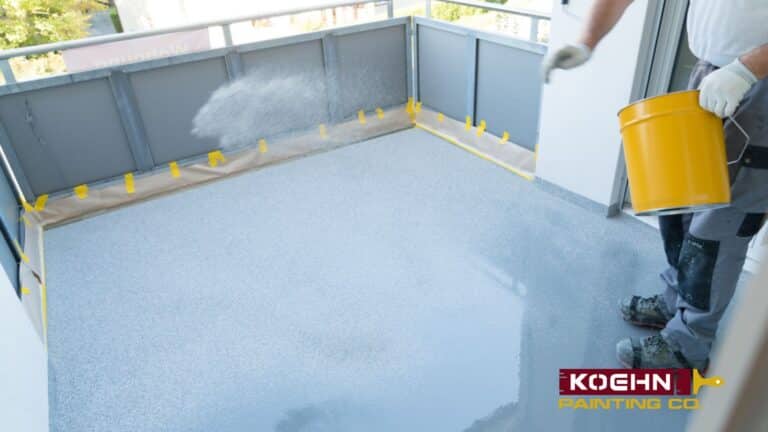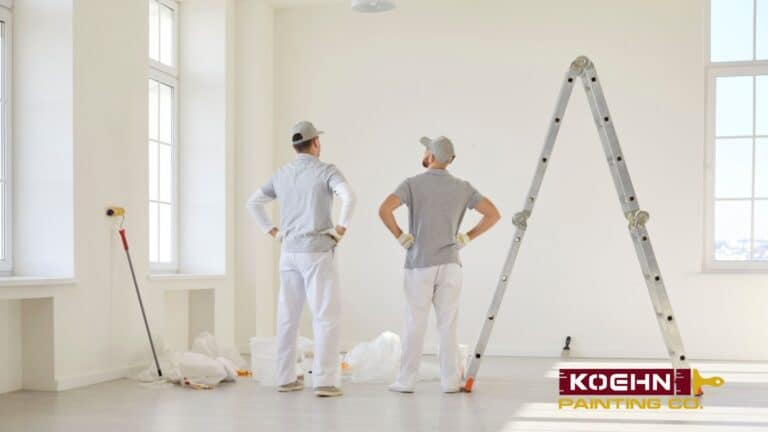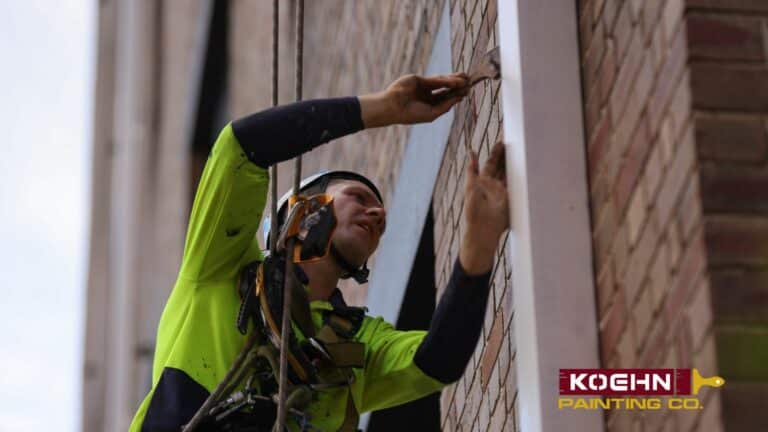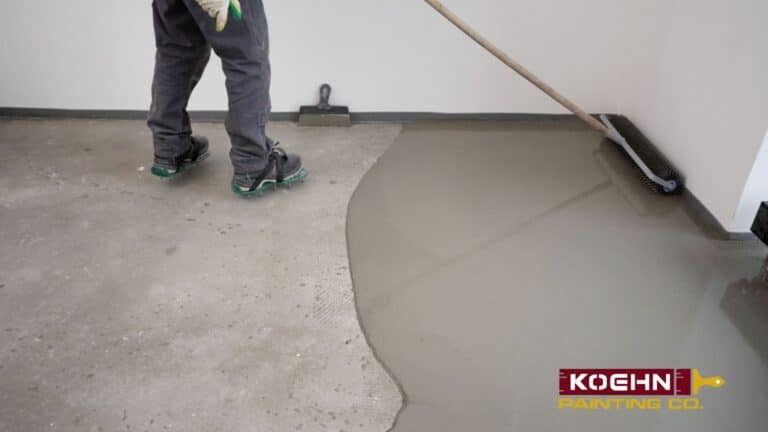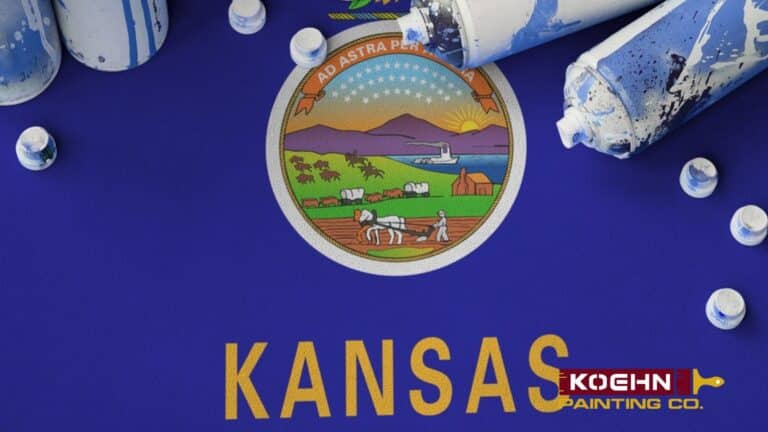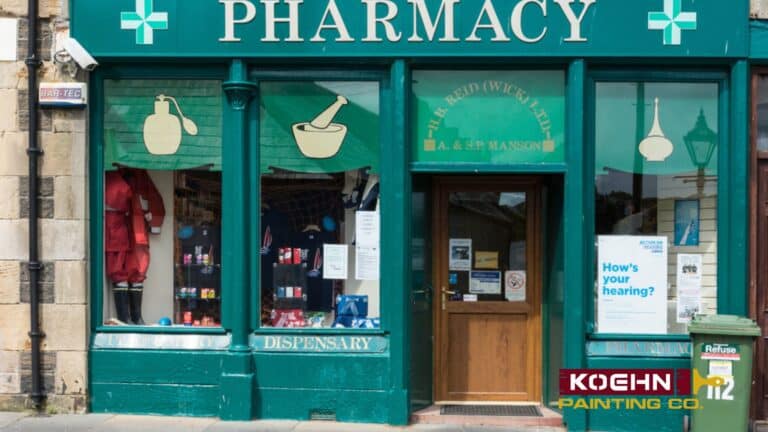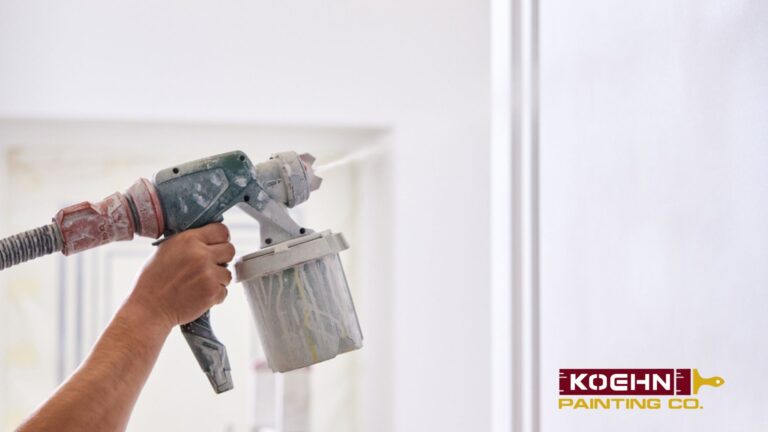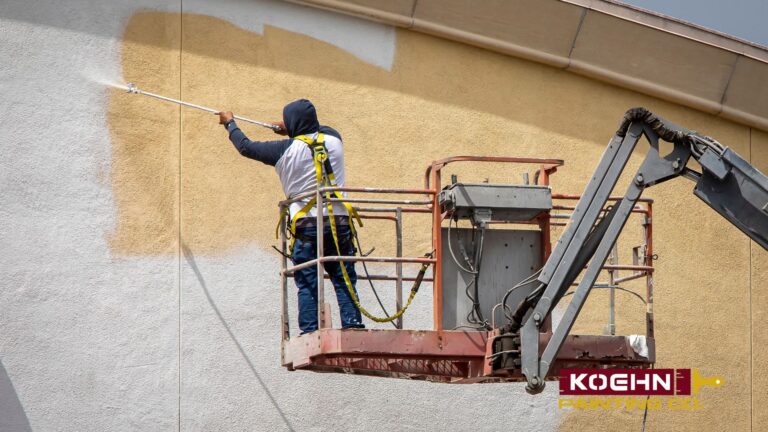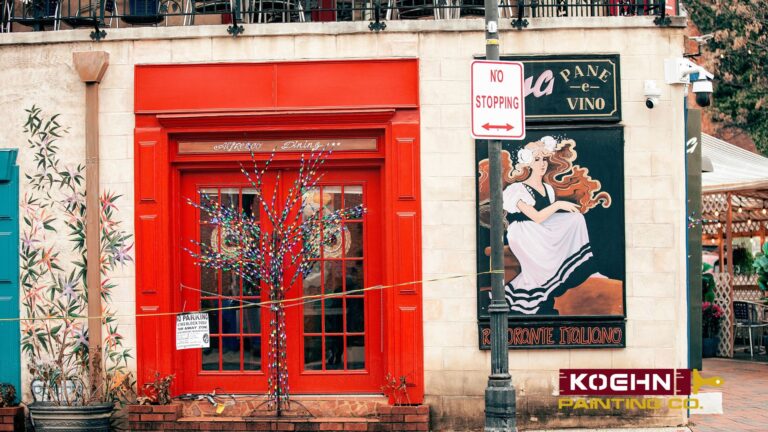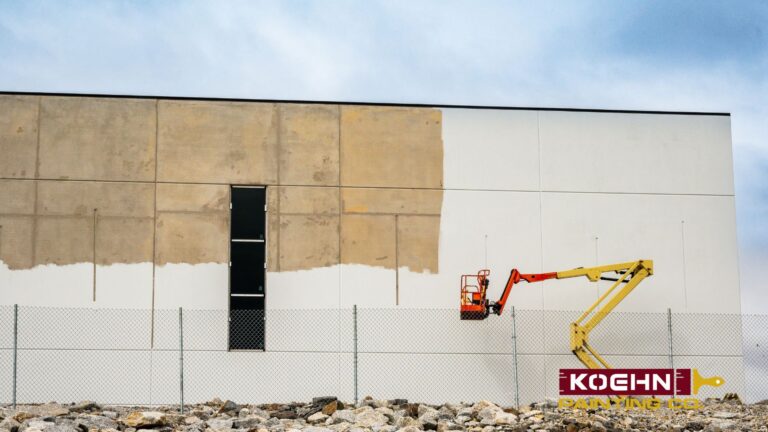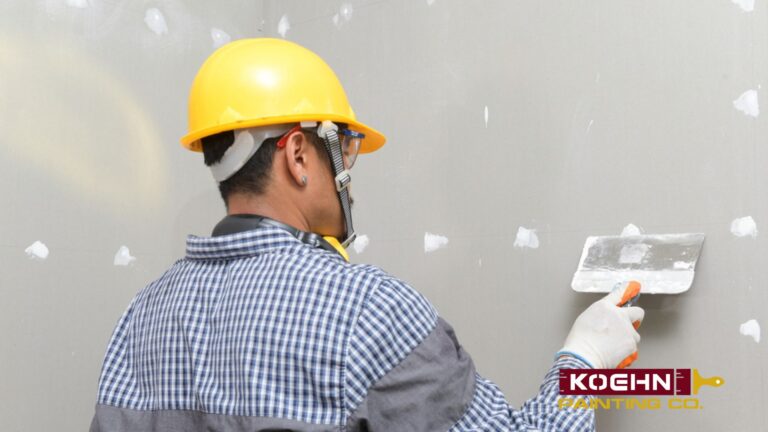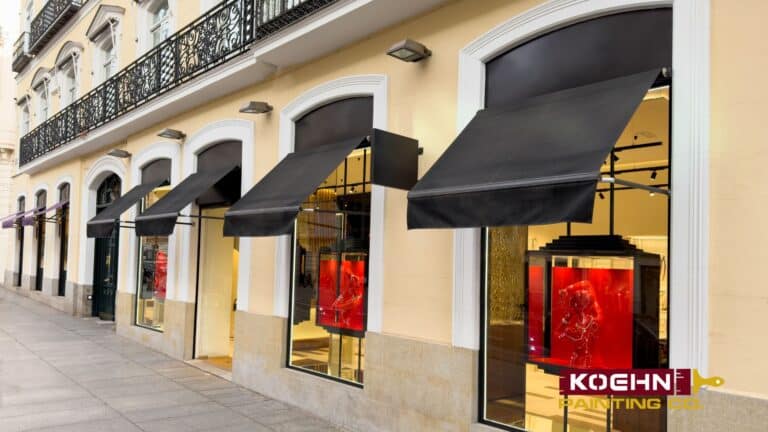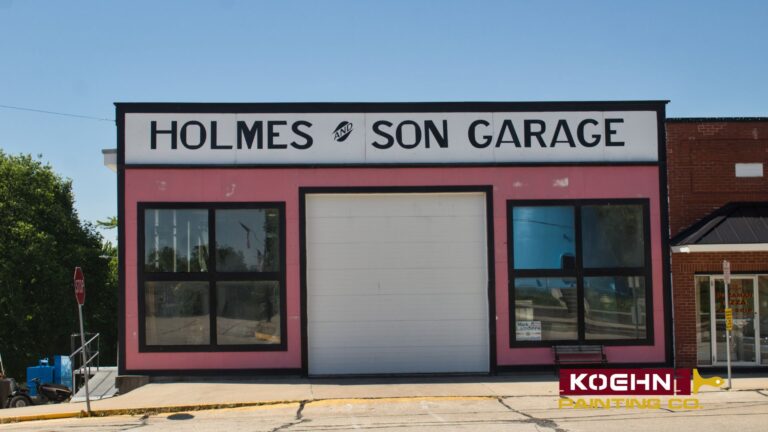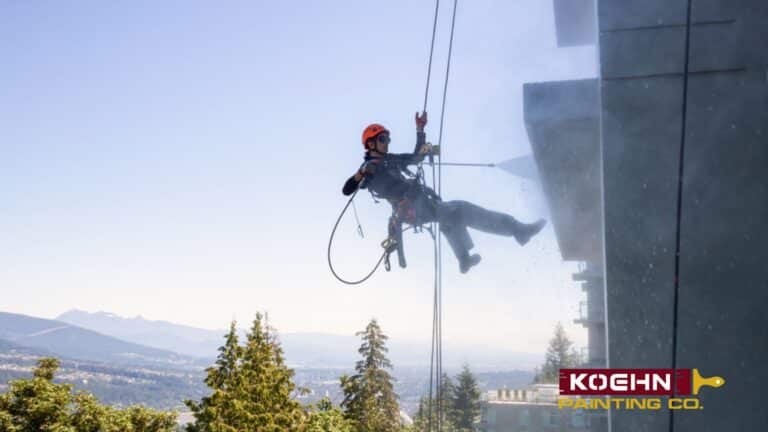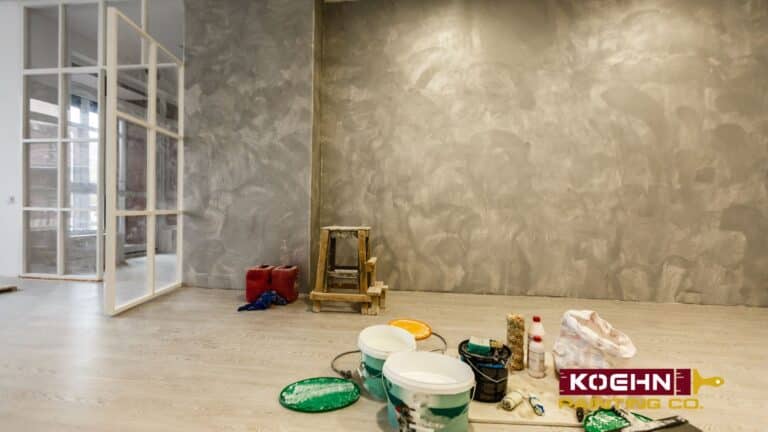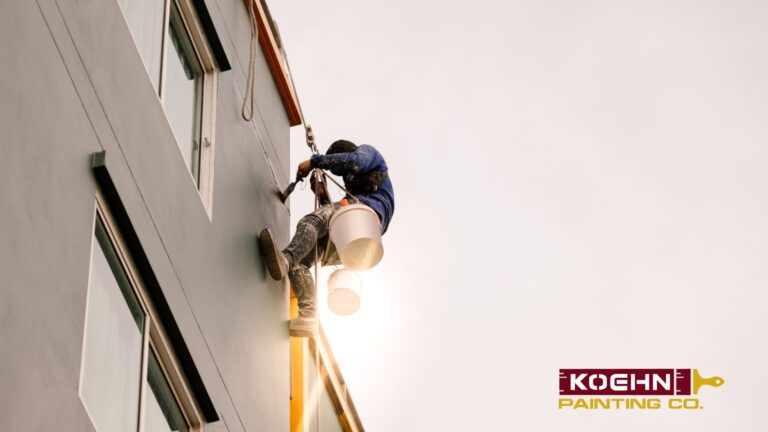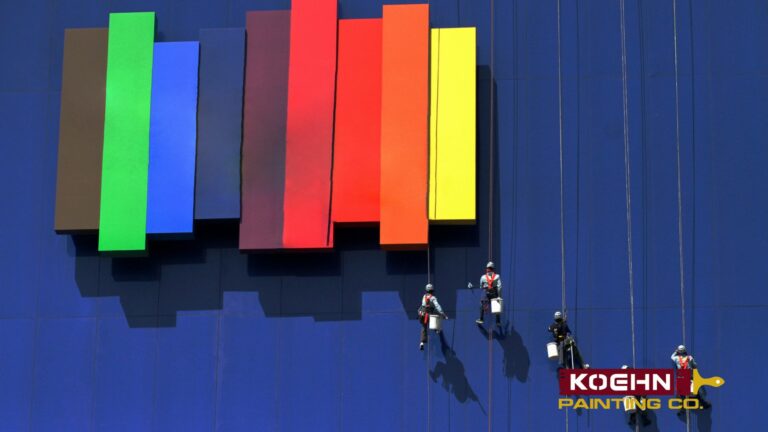Differences Between Commercial and Industrial Painting
Commercial and industrial painting are two essential services in businesses, but they are not the same. They serve separate purposes in maintaining and enhancing the functionality and appearance of various properties. While both involve the application of specialized coatings, the key differences lie in their objectives, techniques, and the environments in which they are used.
So, what exactly is the difference? In simple terms, commercial painting is all about creating spaces that look good and function well for businesses. It’s about making a space that represents your brand, attracts customers, and ensures a pleasant and efficient working environment.
On the flip side, industrial painting is about ensuring durability and protection. It’s designed to safeguard facilities from harsh conditions, whether it’s extreme weather, chemical exposure, or heavy wear and tear from machinery.
While commercial painting focuses on visual appeal and brand identity, industrial painting emphasizes longevity and the ability to withstand tough environments. Whether it’s repainting a store to attract new customers or applying corrosion-resistant coatings to a factory, both types of painting serve a unique purpose that’s essential to the success of a business.
Understanding the differences can help you choose the right approach for your next project, ensuring your space is both functional and appealing.
What Is Commercial Painting?
When we want to difference commercial and industrial painting, we have to first understand that their purposes are simply not the same. Commercial painting is about creating an environment that reflects a brand, supports its business objectives, and impresses its clients.
This applies to retail, hospitality, healthcare, or office space. In any case, the goal of commercial painting is clear: to enhance your business’s image and create a space that works for both your employees and customers.
When a customer walks into your store or office, they form an opinion about your business in the first few seconds. A clean, well-maintained space signals professionalism and attention to detail, while old paint and mismatched colors can give the impression that you don’t care—about your business or your customers.
Commercial painting is all about creating that perfect first impression, but it goes beyond just aesthetics. It’s about making sure the space is functional and aligned with your brand identity.
It’s selecting the right color scheme to convey your brand message and ensuring that the space is welcoming and comfortable; every detail matters. The right commercial paint job helps to boost employee morale, increase customer satisfaction, and even support your bottom line.
Commercial painting is usually used for:
- Offices: Creating a professional, welcoming environment that fosters productivity and reflects the brand’s image.
- Retail spaces: Enhancing store aesthetics to attract customers while aligning with the brand’s overall design and messaging.
- Restaurants: Setting the atmosphere and creating the right mood with colors that match the dining experience, using color psychology to influence emotions.
- Hotels: Designing elegant, cohesive spaces that align with the brand’s identity and provide a memorable guest experience.
- Healthcare facilities: Balancing aesthetics with a calm, clean environment, promoting a sense of comfort and trust while maintaining a sterile atmosphere.
- Schools & universities: Creating a conducive learning environment with colors that inspire focus and creativity while supporting institutional branding.
- Other spaces: Conference rooms, showrooms, and more — any space where professionalism, brand identity, and aesthetics matter.
Commercial painting helps shape the experience of every person who walks through the door, ensuring they feel welcomed, confident, and connected with your brand. Whether it is painting a corporate office or a retail space, a thoughtful paint job is an essential investment in your business’s success.
What Is Industrial Painting?
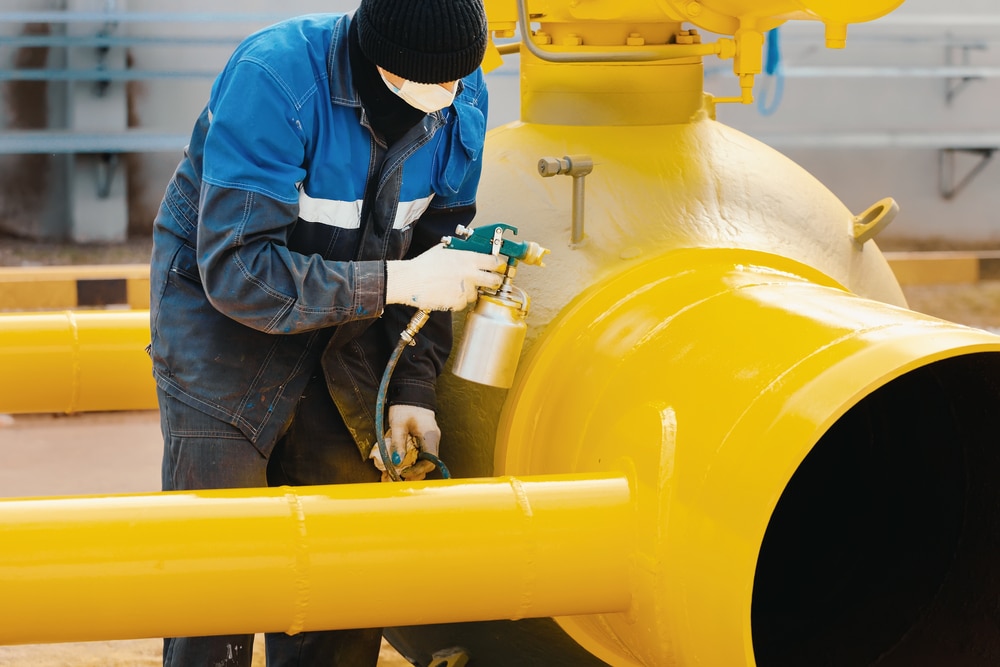
So, we know what commercial painting is, but what is industrial painting? The focus here shifts from aesthetics to durability and functionality. Unlike commercial painting, which is often centered on creating a visually appealing environment, industrial painting is all about protection.
The primary goal of industrial painting is to safeguard surfaces and equipment from the harsh conditions that many industrial environments face. Whether it’s corrosion from chemicals, damage from extreme weather, or wear and tear from constant use, industrial coatings are designed to endure and protect, ensuring that structures and machinery continue functioning efficiently now and in the future.
When we compare commercial and industrial painting, we see that industrial painting requires more specialized materials and techniques, as it must address specific challenges such as exposure to chemicals, high temperatures, and physical damage.
Think about the surfaces in a factory or a warehouse — they need to withstand constant use, moisture, and the potential for corrosion. The coatings used in industrial painting provide an essential protective layer that prevents breakdowns, reduces maintenance costs, and extends the life of expensive machinery and infrastructure.
For businesses that rely on industrial equipment or have large, complex facilities, industrial painting is a crucial investment that protects assets, minimizes downtime, and supports the overall efficiency of operations. It’s not about making things look good; it’s about making them last.
Industrial painting is usually seen in:
- Factories: Protecting machinery and structures from wear and tear, as well as chemicals or corrosive substances commonly found in manufacturing processes.
- Warehouses: Ensuring durable floor coatings and surface protection to withstand heavy traffic, equipment movement, and chemical exposure.
- Manufacturing plants: Applying specialized coatings to resist chemical exposure, corrosion, and abrasion from heavy-duty equipment.
- Oil rigs: Handling extreme environmental conditions like saltwater corrosion and high temperatures with coatings designed for durability and protection.
- Bridges & overpasses: Utilizing protective coatings that prevent rust and corrosion from weather and traffic wear.
- Power plants: Applying anti-corrosive coatings to protect heavy-duty machinery, pipes, and surfaces that are exposed to heat and moisture.
- Other facilities: Storage tanks, silos, pipelines, and other large-scale industrial structures that require durable coatings to prevent degradation and maintain operational efficiency.
So, what is industrial painting? This is an essential practice for ensuring long-term performance and reliability while protecting critical infrastructure or safeguarding machinery from environmental elements. It’s a vital part of keeping industries running smoothly, and businesses in sectors like manufacturing, energy, and infrastructure depend on these specialized coatings to minimize downtime and extend the life of their assets.
Key Differences Between Commercial Painting and Industrial Painting

When it comes to commercial and industrial painting, it’s essential to understand that while both are specialized services, they serve very different purposes and require distinct approaches.
At first glance, you may think the only difference is the scale, but the goals, techniques, and materials used are much more specific.
If you’re wondering what is the difference between industrial and commercial painting, here’s a breakdown of the key distinctions that matter most when planning your next project.
Purpose and goals
The primary difference between commercial and industrial painting lies in the purpose of the painting job. Commercial painting focuses on visual appeal, with an emphasis on creating spaces that are aesthetically pleasing, inviting, and in alignment with a brand’s identity.
Businesses use commercial painting to enhance customer experience, boost employee morale, and ensure that the environment reflects the professionalism of the company. Whether it’s a retail store, office space, or healthcare facility, the goal is to create a space that appeals to the senses and builds brand identity.
On the other hand, industrial painting is all about protection and durability. What is industrial painting? It involves applying coatings that safeguard surfaces from the harsh conditions that industrial environments often face, such as extreme temperatures, chemical exposure, and constant physical wear. Industrial painting ensures that equipment and infrastructure are protected, reducing maintenance costs and extending the lifespan of assets.
Materials and techniques
The materials used in commercial and industrial painting jobs are very different. In commercial painting, you’ll find more variety in terms of colors, finishes, and textures, with paints designed to provide a polished, uniform look. Common paint finishes include matte, gloss, satin, and semi-gloss, chosen for their aesthetic qualities. The application is typically quicker and focuses on achieving a smooth, consistent appearance.
For industrial painting, however, the coatings used are specialized to withstand extreme conditions. These include epoxy coatings, polyurea, and anti-corrosive paints, all designed for durability and long-lasting protection. These coatings are designed to resist abrasion, corrosion, and chemical exposure. The application process often takes longer due to the thickness of the coatings and the need for extensive surface preparation.
Time and downtime
Commercial and industrial painting jobs also differ in terms of the time required to complete them. Commercial painting projects are typically completed faster since the focus is on creating a smooth, visually appealing finish with minimal disruption to business operations. For example, most commercial painting jobs are scheduled during off-hours or over weekends to minimize downtime and maintain business operations.
On the other hand, industrial painting jobs are much more time-consuming due to the rigorous surface preparation, multiple coatings, and longer drying times required to ensure the longevity and protection of the industrial structure or equipment. Since these environments demand more heavy-duty coatings, the job tends to take longer and might require significant downtime, especially if it involves large machines or manufacturing plants.
Applications
The spaces where each type of painting is used are another key difference. Commercial painting is typically used in environments like offices, retail spaces, restaurants, and healthcare facilities, where aesthetics are essential for attracting customers and creating a positive atmosphere. These jobs require precise color matching, smooth finishes, and a professional look.
In contrast, industrial painting is used for factories, warehouses, power plants, oil rigs, and other facilities exposed to harsh environmental factors. The focus here is on protective coatings that can withstand extreme conditions and ensure the equipment and infrastructure remain operational for years.
While commercial and industrial painting may seem similar at first glance, the reality is that they require vastly different approaches. Understanding why these projects are not the same is crucial when planning your next painting job.
Commercial and Industrial Painting Projects: Step-by-Step
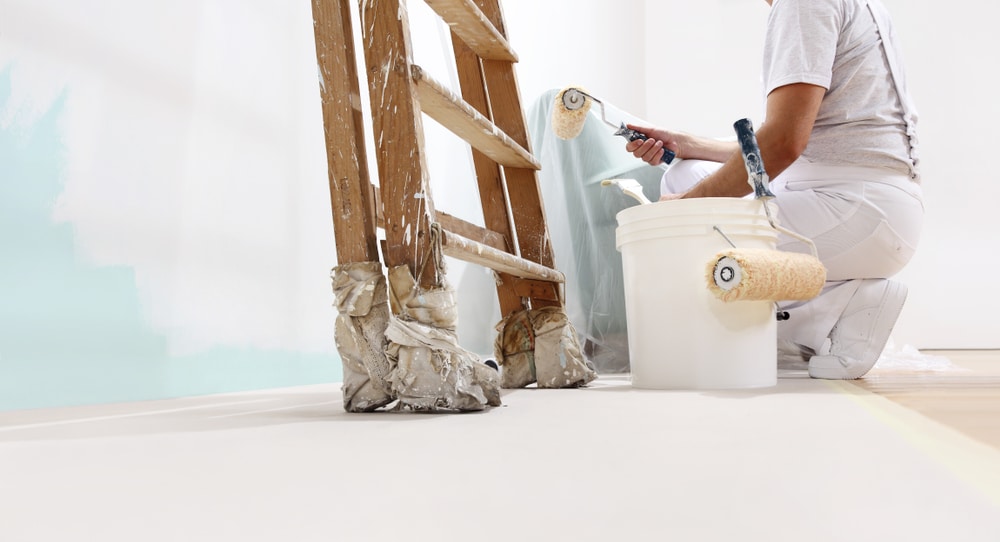
Whether you’re painting a sleek office space or protecting heavy-duty equipment in a factory, understanding the step-by-step process of both commercial and industrial painting projects can help ensure that everything goes smoothly.
While both types of painting require careful planning and skilled application, they differ significantly in approach, materials, and execution.
Let’s dive into the steps involved in each to give you a clearer picture of what to expect.
Commercial painting project: Step-by-step
- Surface Preparation (Cleaning, Sanding, Priming): The first step in any commercial painting project is ensuring the surfaces are properly prepared. For office or retail space painting, this typically involves cleaning the walls to remove dirt, dust, and grime, followed by sanding to smooth out any rough patches. Priming is essential to ensure that the paint adheres well and lasts longer.
- Choosing Colors and Finishes Based on Brand Identity: One of the most important aspects of commercial painting is aligning the paint with your brand identity. Whether you’re painting a retail space, office, or healthcare facility, color selection plays a key role in creating the right atmosphere. Bright colors might be used to energize a retail store, while calming tones could be ideal for a healthcare facility. The finish—whether matte, satin, or gloss—also impacts the overall look and feel.
- Timeline for Minimal Disruption: Timing is crucial in commercial painting projects. For offices and retail spaces, it’s important to minimize downtime and avoid disrupting business operations. Commercial painting jobs are often scheduled after hours or over weekends to ensure the space is ready for use as soon as possible.
- Final Inspection and Touch-Ups: After the painting is completed, a thorough final inspection is performed to ensure the job meets quality standards. Any areas that require touch-ups are addressed, ensuring the space looks polished and professional. The aim here is to provide a flawless finish that aligns with the client’s vision.
Industrial painting project: Step-by-step
- Detailed Preparation (Surface Cleaning, Rust Removal, Priming): Industrial painting starts with a more extensive surface preparation process. This can include surface cleaning to remove dirt, oil, and any old paint or rust. Rust removal is crucial for industrial environments, especially when painting metal surfaces that will be exposed to harsh conditions. Priming is necessary to create a strong foundation for the protective coatings.
- Application of Corrosion-Resistant Coatings: Industrial projects require specialized coatings, often designed to resist corrosion and abrasion. These coatings are essential for protecting surfaces exposed to harsh conditions, such as moisture, chemicals, and extreme temperatures. Epoxy or polyurethane-based coatings are commonly used for their durability and resistance to corrosion.
- Special Considerations for Chemical or Environmental Exposure: One of the defining features of industrial painting is the need to account for chemical and environmental exposure. Whether it’s a factory, oil rig, or warehouse, the coatings must be able to withstand specific environmental factors. Special coatings are applied to resist chemicals, high humidity, or extreme weather conditions, ensuring that the structures remain intact and functional over time.
Both commercial and industrial painting projects require attention to detail and a focus on specific needs, but the approaches are clearly distinct.
Commercial projects are designed to improve the appearance and functionality of spaces for clients and customers, while industrial projects focus primarily on protection and durability in tough environments.
Understanding the differences in these processes can help you better plan and execute your next painting project.
Hiring the Right Painting Professionals for Each Case
In both commercial and industrial painting, the moment you have to choose which professionals you’ll hire will be crucial for ensuring a successful and efficient project—and no headaches.
The right team not only brings expertise but also ensures that the project is completed on time, within budget, and with a high level of quality.
Here’s what you should look for when choosing a painting company for either commercial or industrial projects:
- Experience with Both Commercial and Industrial Projects: It’s essential to hire a company with experience in both commercial and industrial painting. The requirements for each are very different, so the painting team should have expertise in the specific challenges and techniques required for each type of job. Companies that have worked across both sectors will be equipped to handle the nuances of each and will be able to provide valuable insights and recommendations for your project.
- Relevant Licensing and Insurance to Protect Your Property: Make sure the painting company is fully licensed and insured. This not only ensures they are qualified to perform the work but also protects your property in case of any accidents or damage during the project. A licensed and insured company demonstrates professionalism and a commitment to quality and safety.
- A Commitment to Safety Protocols: OSHA Standards and Training: Safety is a priority, especially on industrial painting projects. Ensure that the company follows strict safety protocols and complies with OSHA (Occupational Safety and Health Administration) regulations. The team should be trained in safety practices to avoid accidents and injuries while working. This is especially important in industrial settings where exposure to chemicals, high machinery, and hazardous environments is common.
- Verifying Testimonials and References: Past Client Experiences and Satisfaction: A trustworthy painting company should have a solid track record of satisfied clients. Ask for testimonials and references to verify their past work. Speak with previous clients to get a sense of the company’s reliability, the quality of their work, and how they handled challenges during the project. A good reputation speaks volumes about the professionalism and expertise of the team.
Useful questions to ask before getting into action
In case you’re feeling unsure of who to hire or what to look for in professionals, here are some useful questions to ask before hiring:
- What’s the estimated timeline for completion?: Think that asking about the timeline helps you gauge the project’s duration and ensures it fits within your scheduling needs. For commercial projects, minimizing downtime is essential to avoid disrupting business operations. For industrial projects, you need to understand if the team can complete the work while meeting any operational requirements of the facility. A clear timeline also ensures you can plan for any necessary downtime or coordination with other contractors.
- What type of materials do you use?: The materials used can significantly impact the outcome and longevity of the painting job. Commercial spaces require finishes that align with design goals, while industrial spaces need coatings that can withstand environmental challenges like chemicals, moisture, or high traffic. Ask the painting company about the types of paints, coatings, and finishes they use, and ensure they are suitable for your specific needs. The choice of materials should align with both aesthetic and functional goals.
- What’s the tocal cost, and is it transparent?: Always inquire about the total cost upfront, and ensure the company provides a clear, detailed estimate. Transparent pricing helps avoid misunderstandings and ensures there are no hidden fees down the line. Understanding the cost breakdown is crucial, especially for larger commercial or industrial projects where the scope of work can affect pricing. A trustworthy company will be transparent about their fees and provide a comprehensive quote.
- Do you offer warranties on your work?: Warranties protect your investment by ensuring that if anything goes wrong after the project is completed, the painting company will stand by their work. Ask if the company offers warranties on their painting services and understand what the warranty covers. This is particularly important in industrial projects where the coating must withstand harsh conditions over time.
- How do you ensure compliance with safety standards?: Especially in industrial settings, safety is critical. Ask the company how they ensure they are compliant with relevant safety standards. This includes training on handling hazardous materials, proper ventilation, and protective equipment. Ensuring safety compliance is vital not only for the workers but also for the protection of your property and employees.
Conclusion
In commercial and industrial painting, choosing the right approach and the right professionals is key to getting the job done right. At Koehn, we know just how important it is to get every detail right. Is it an office? We got it. Is it a retail space? We got it. Are you looking to ensure the durability of your factory’s equipment? We understand every part of the process.

